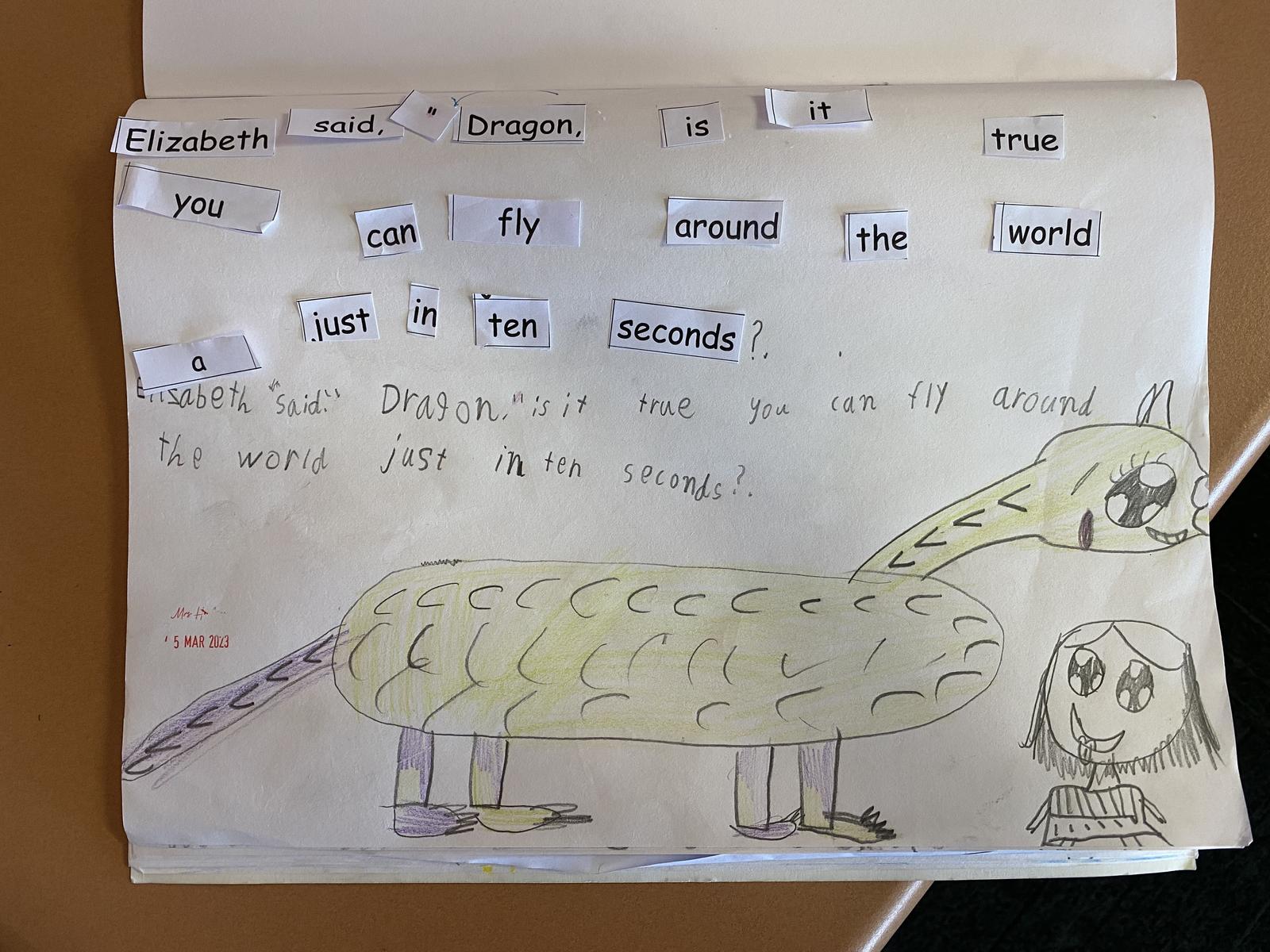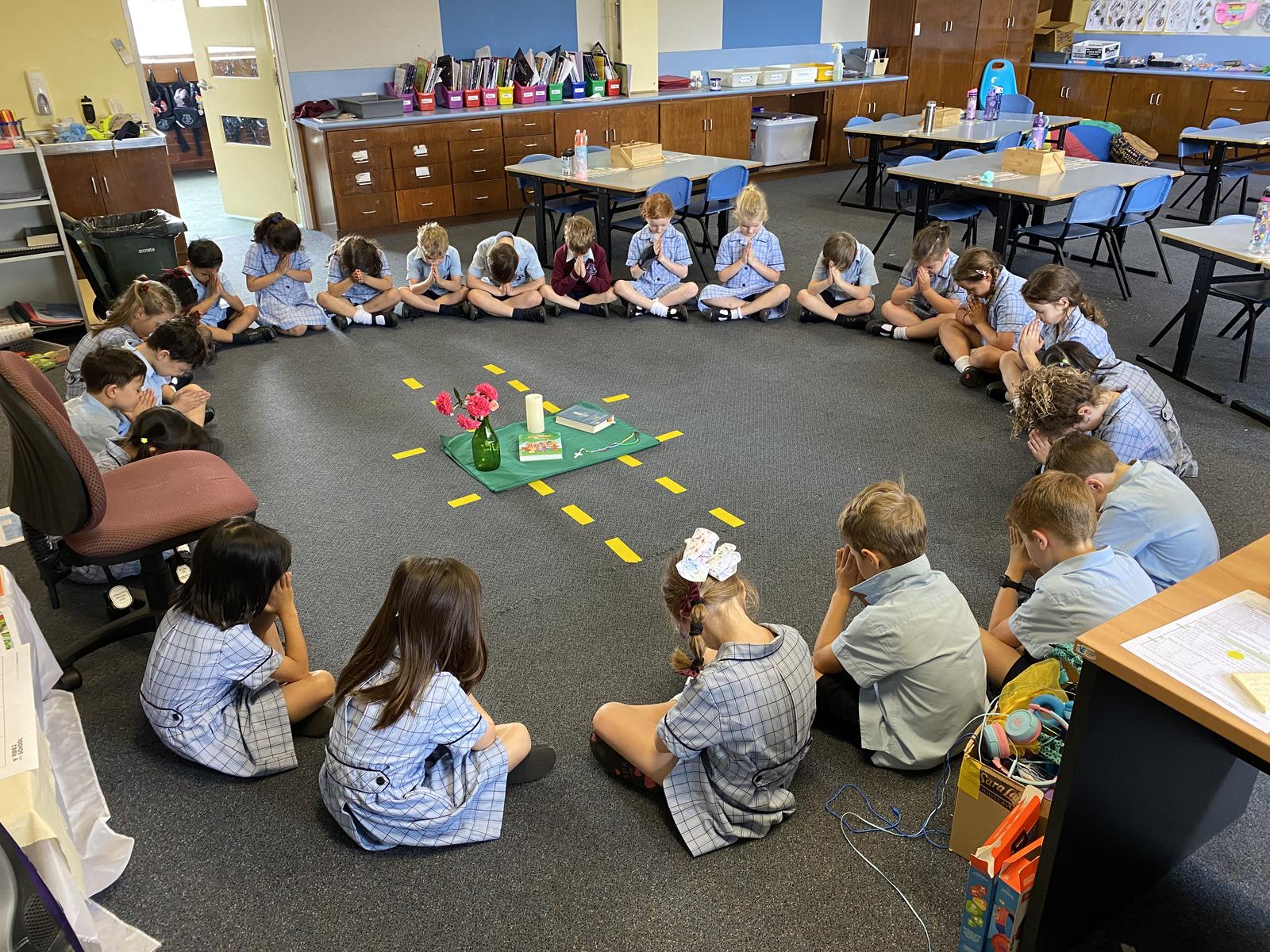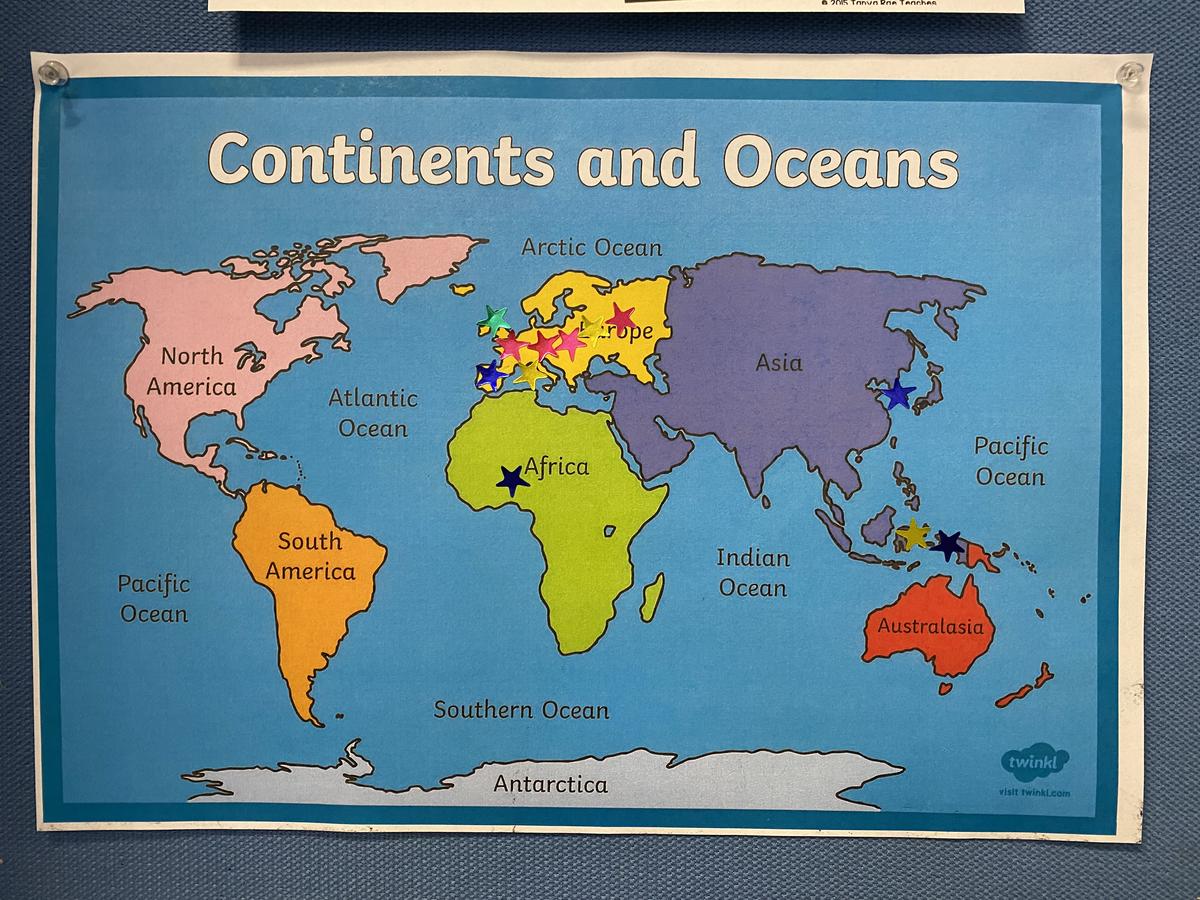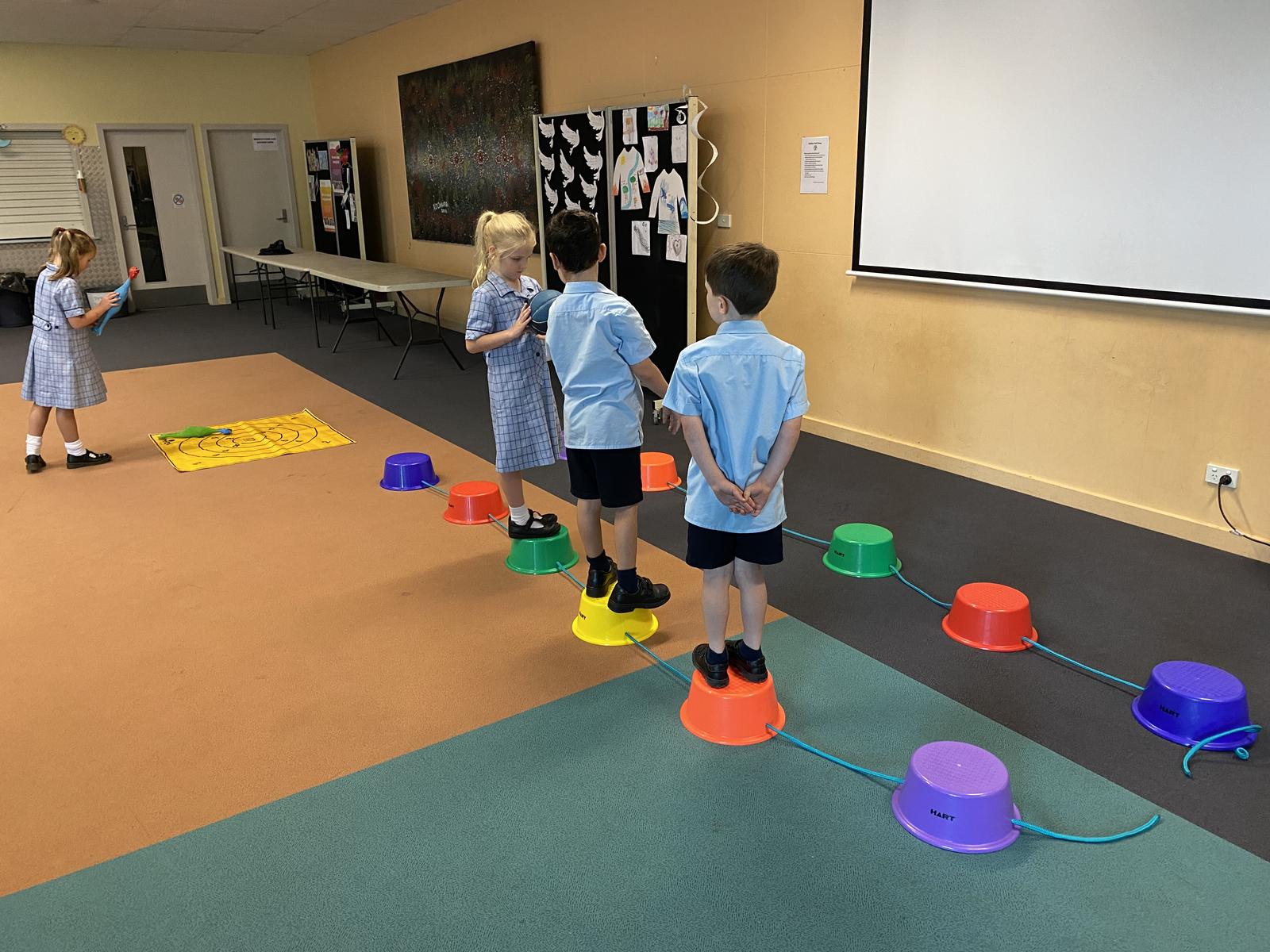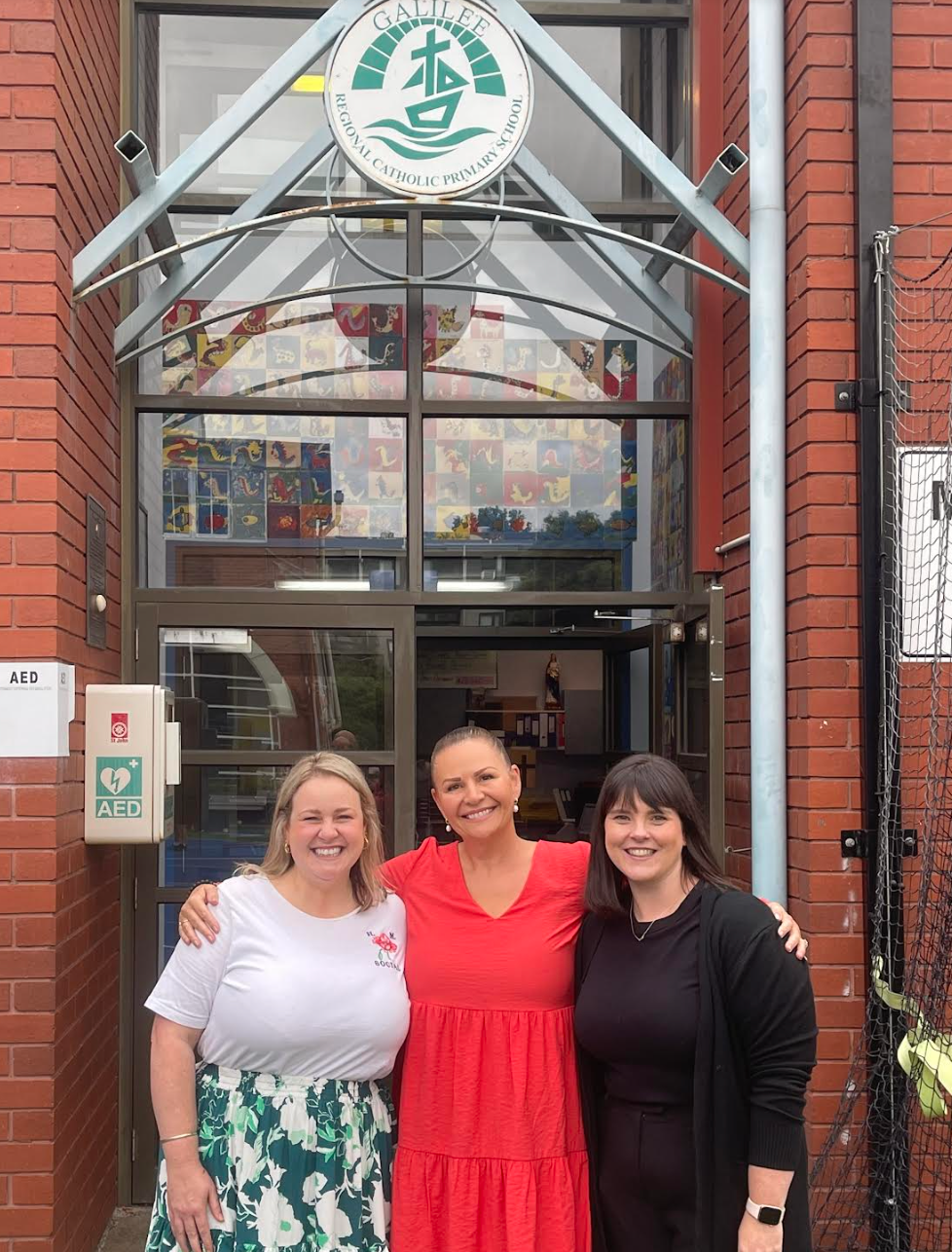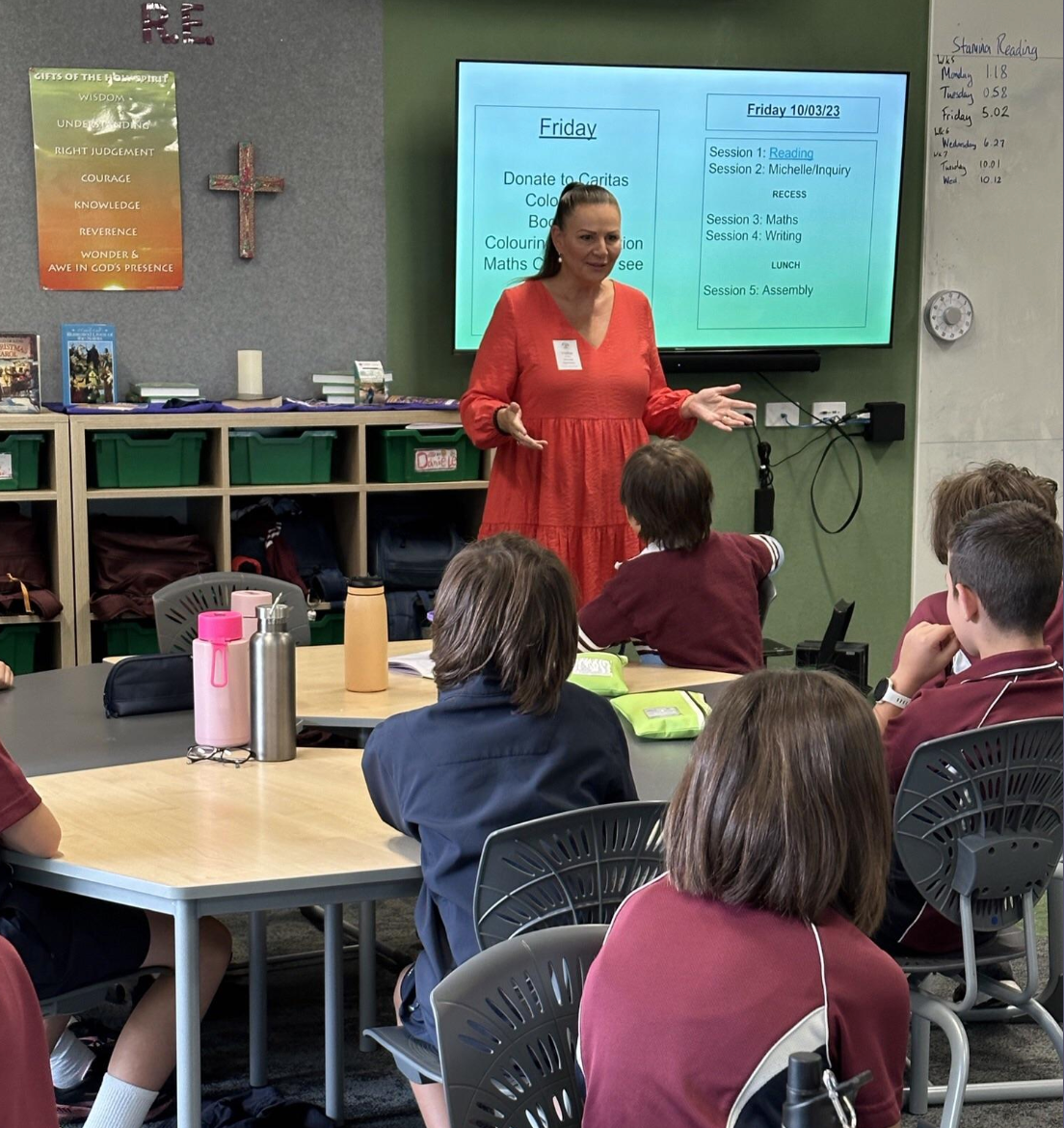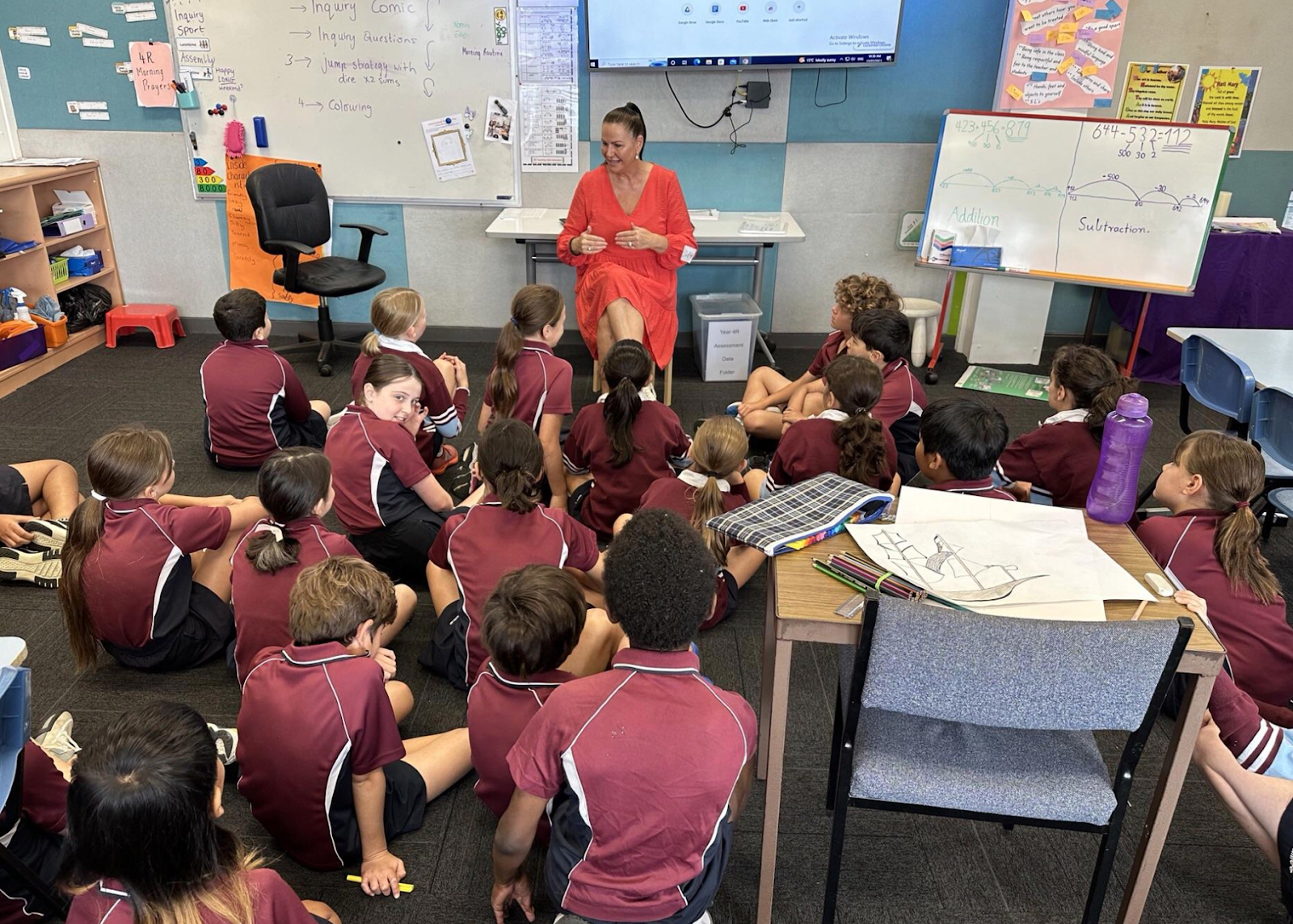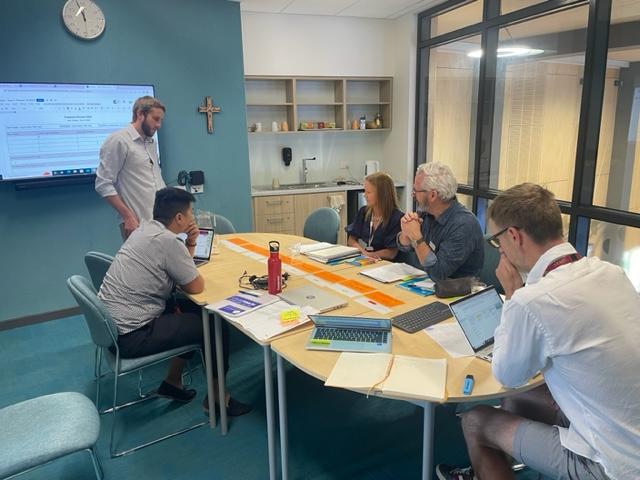Learning and Teaching

Year One
In Year One we are demonstrating how clever we are and how much we have progressed from being at school for a full year! We have no time to waste, we are busy writing recounts and narratives, as well as solving tricky addition and subtraction algorithms. We are also deeply immersed in our Religion and our Inquiry Unit called ‘Harmony’.
In English we have been looking at different types of writing genres and their purposes. We are currently exploring narratives. We are learning that narratives are a form of writing that are written to entertain the reader. We know that narratives have an orientation, a series of events with a problem and at the end there is a resolution. This week we are writing stories about Dragons! Our dragon’s name is Nogard, which is ‘dragon’ backwards.
In Maths, we have been using our hands on materials to race to a given number, while applying addition skills. We have also learnt that subtraction is the reverse of addition. Place value is a new concept for many Year 1 students and we are learning that there are different houses that our numbers can be placed in. For example; the number 72 has 7 tens and 2 ones. We know that we cannot have more than 9 in each house. Each day we have a ‘Number of the Day.’ This is where we must write the special number, build the number using blocks, place the number on a number line, state if the number is odd or even and write the numbers that come before and after it.
In Religion, we are looking at identifying how people live safely and happily in a loving relationship with God. We know that God's plan is that people help each other to live safely and happily in our community. We have listened to Matthew’s Gospel reading and discussed God’s Golden Rule.
Matthew 7:12
“So whatever you wish that others would do to you, do also to them, for this is the Law and the Prophets.”
We have also discussed the importance of treating others how we want to be treated.
This leads us to our Inquiry unit. In our Inquiry Unit we are focusing on the term Harmony. This is where we are learning about how our local environment demonstrates harmony, along with the special places that are found within our community. We have loved learning about Australia and our position in the world, along with the importance of harmony between different countries. We are looking at the unique places in both our local community and in Australia, for example: The MCG, Uluru and the Sydney Opera House. We show respect to the First Nations peoples and have learnt from them ways to care and respect the land.
On Fridays we have begun our Perceptual Motor Program. The children love this opportunity to join with all the Year 1 students to improve their gross motor skills.
SMART Spelling
At Galilee we have implemented a whole-school spelling approach called SMART Spelling.
On Friday, we had Michelle Hutchison, the founder of SMART Spelling drop into Galilee to see the children and teach a few spelling lessons in Year 6, Year 4 and Prep. The children asked Michelle some amazing questions such as “what is the trickiest digraph?” and “what is the rarest spelling pattern?”
Thank you Michelle for visiting us!
SMART spelling is an explicit and synthetic phonics approach. Spelling is taught through pattern and regularity. Spelling rules are taught in the context of words with an emphasis on meaning and vocabulary development.
The core of SMART Spelling in the classroom involves the use of the SMART sequence:
Say the word
Meaning: put it in context and discuss variations
Analyse: syllables, sounds and letters
Remember: focus on the parts of the word that we need to remember
Teach: Spell the word aloud using letter names and clustering.
Spelling definitions for parents:
Letters: Letters are the symbols of the alphabet. There are 26 letters: a, b, c, d, e . . .. There are uppercase and lowercase letters.
Syllables: Syllables are the beats of a word.
Phonemes: Phonemes are the sounds of speech. In Australian English there are 44 sounds. The 44 English sounds fall into two categories: consonants and vowels.
Graphemes are the ways that phonemes are represented in words. Graphemes can be a single letter (graph), or a combination of two (digraph), three (trigraph), or four letters (quadgraph).
A graph is one letter that represents a sound.
A digraph is two letters that represent a sound, e.g. /sh/ in ship
A trigraph is three letters that represent a sound, /igh/ in light
A quadgraph is four letters that represent a sound, e.g. / ough / in rough.
Things you can do at home to help your child practice spelling:
1. Review their spelling words that their teacher has given them. Go through elements of the SMART sequence with them. For example, find the word's meaning and put it in a sentence. Discuss how you would use the word. Find out the number of syllables, letters and phonemes. Ask them to focus on the part of the word they find tricky.
2. When your child spells a word incorrectly, please don't cross it out and write it for them. They need to fix the word. Instead, tick the individual letters that are correct, and underline the parts of the word they haven't got right yet. Then help them find the right way to spell the word.
3. Practice, practice, practice!
4. Create little dictations for your child to write.
5. When reading a book together, pick out interesting words and talk about them.
6. When driving, play word games and set spelling challenges.
7. Explore these online games: Forest phonics, Phonics Pop, Viking Full Circle
Happy Spelling!
Holly Evans
NAPLAN
This week our Year 3 and 5 students have been participating in NAPLAN Assessments.
NAPLAN is a national literacy and numeracy assessment that students in Years 3, 5, 7 and 9 sit each year. It is the only national assessment all Australian students have the opportunity to undertake.
NAPLAN assesses the literacy and numeracy skills that students are learning through the school curriculum and allows parents/carers to see how their child is progressing against national standards and over time.
NAPLAN is just one aspect of a school’s assessment and reporting process. It doesn’t replace ongoing assessments made by teachers about student performance, but it can provide teachers with additional information about school tend data and student growth data between year 3 and 5.
We congratulate our Year 3 and 5 students who approached the assessments with enthusiasm this week.
Teacher Professional Development in Mathematics
This year, Galilee was successful in receiving a $20,000 grant from Melbourne Archdiocese of Catholic Schools (MACS) to support the learning and teaching of Mathematics at Galilee. This week teachers worked with Mark Mudge and Joanna Pringle, Mathematics experts from MACS Southern Region, to plan for units of work that will be taught next term. Teachers engaged in rich dialogue around curriculum documents, the latest research and the latest pedagogical approaches to teaching Mathematics. Teachers developed units of work that are based on student needs. We would like to thank Richard Harding our Maths Leader and Amy Burns our Learning and Teaching Leader for facilitating the grant and organising these experiences for our staff.

